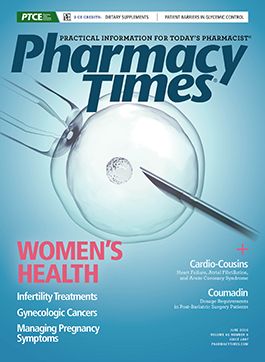Bill to Restrict Direct-to-Consumer Ads Introduced in House Committee
Draft legislation to restrict direct-to-consumer advertising was recently referred to the House Committee on Energy and Commerce.
Draft legislation to restrict direct-to-consumer (DTC) advertising was recently referred to the House Committee on Energy and Commerce. At present, the United States and New Zealand are the only countries that currently allow DTC advertising, and the European Union recently voted to uphold its ban on DTC ads.
Introduced by Representative Rosa DeLauro (D-CT), the “Responsibility in Drug Advertising Act” (HR 4565) would amend the Federal Food, Drug, and Cosmetic Act to restrict DTC advertising. The current language of HR 4565 stipulates that a drug’s sponsor cannot conduct DTC advertising within 3 years of the drug’s FDA approval. After the 3-year moratorium, the Secretary of the US Department of Health and Human Services could still prohibit DTC advertising if he or she “determines that the drug has significant adverse health effects based on postapproval studies, risk-benefit analyses, adverse event reports, the scientific literature, and clinical or observational studies, or any other appropriate source,” according to the bill. Notably, the bill’s language also provides the possibility to obtain a waiver for the moratorium if the drug in question is a breakthrough therapy considered to have “affirmative value to public health.”
“This legislation puts reasonable safety restraints on…[DTC] drug marketing,” said Connecticut State Comptroller Kevin Lembo and Rep. DeLauro, in a joint press release. “Prescription drug sales should be driven by thoughtful health care decisions between patients and their providers, not by…drug marketers.”
The American Medical Association has called for a DTC advertising ban, but the Pharmaceutical Research and Manufacturers of America (PhRMA) asserts that the ads increase awareness of diseases, in general, and their available treatments. “Studies show DTC advertising brings patients into their doctors’ offices and starts important doctor-patient conversations about health that might otherwise not take place,” PhRMA asserts in its guidelines on pharmaceutical advertising.
Currently, federal law does not require the FDA to approve advertisements before they are released to the public, although the agency can investigate claims that broadcasted drug information is false or misleading. For example, DTC ads for the OTC allergy treatment Nasonex were the subject of a study alleging that when the ads listed benefits, the images on the screen matched the voiceover and moved slowly, but when adverse effects were listed, the images often became mismatched and the text was distracting. However, the FDA ultimately concluded that the tone and consistency of background images did not impair viewers’ understanding of the risk information.
Although anti-DTC sentiment is strong among many health care stakeholders, pharmacists may be relieved to hear there is evidence to suggest most patients do not actually base their health care decisions on what they see on TV. A recent survey from Treato, an online health care consumer insights firm, revealed that the percentage of patients who ask their physicians about the drugs they see advertised on TV has dropped to just 7% (37/529) of Treato users, down from 21% last year. This finding is significant given the fact that 64% of survey respondents said they have seen more pharmaceutical advertising this year compared with last year. Notably, patient interest in drug advertising has been waning even as pharmaceutical companies are investing more money in DTC advertising campaigns.
According to Kantar Media, pharmaceutical companies spent $5.4 billion on DTC advertisements in 2015, representing a 19% increase in DTC spending from 2014. Approximately 66% of total DTC funding in 2015 was spent on TV ads alone.
Regardless of the bill’s future, pharmacists should remain aware that DTC advertising is a powerful tool for patients, and pharmacists are well positioned to educate patients on the benefits and risks of the medications they see advertised on television.

